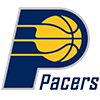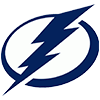ADP TALK
Francisco Cordero vs. Joel Hanrahan
According to ADP information from Mock Draft Central, in 5x5 leagues Cordero is being taken with the 219th overall pick, Hanrahan the 270th.
If this decision is being made solely on history I totally understand it. The problem is we are looking forward to 2011, not backward when evaluating players (at least we should be). Heck, even if we look back to 2010 the numbers associated with these two relievers easily favors Hanrahan - by a lot, except in the saves column of course.
Hanrahan: 3.62 ERA, 1.21 WHIP, 12.92 K/9, 3.85 K/BB, FIP 2.62, 1.05 GB/FB
Cordero: 3.84 ERA, 1.43 WHIP, 7.31 K/9, 1.64 K/BB, FIP 3.92, 1.18 GB/FB
So tell me, how many of you out there would draft Cordero first based on those numbers? We all know the answer would be none of you.
Now, Cordero has racked up at least 34 saves in six of the past seven seasons while Hanrahan has 20 saves in his career. Cordero is also perceived to have a better hold on the closers role in Cincy while the hold of Hanrahan is a bit more tenuous. While I can side with the Cordero side on this argument, I would contend that the situations are much closer than most suggest.
It is true that Hanrahan doesn't have a history of success in the ninth inning, and managers tend to give guys like that less rope than established players. There is also the fact
ADP TALK
Francisco Cordero vs. Joel Hanrahan
According to ADP information from Mock Draft Central, in 5x5 leagues Cordero is being taken with the 219th overall pick, Hanrahan the 270th.
If this decision is being made solely on history I totally understand it. The problem is we are looking forward to 2011, not backward when evaluating players (at least we should be). Heck, even if we look back to 2010 the numbers associated with these two relievers easily favors Hanrahan - by a lot, except in the saves column of course.
Hanrahan: 3.62 ERA, 1.21 WHIP, 12.92 K/9, 3.85 K/BB, FIP 2.62, 1.05 GB/FB
Cordero: 3.84 ERA, 1.43 WHIP, 7.31 K/9, 1.64 K/BB, FIP 3.92, 1.18 GB/FB
So tell me, how many of you out there would draft Cordero first based on those numbers? We all know the answer would be none of you.
Now, Cordero has racked up at least 34 saves in six of the past seven seasons while Hanrahan has 20 saves in his career. Cordero is also perceived to have a better hold on the closers role in Cincy while the hold of Hanrahan is a bit more tenuous. While I can side with the Cordero side on this argument, I would contend that the situations are much closer than most suggest.
It is true that Hanrahan doesn't have a history of success in the ninth inning, and managers tend to give guys like that less rope than established players. There is also the fact that Evan Meek is in waiting, and he was pretty dominating last year, but it's not like Meek has been a ninth inning wonder either.
In Cincinnati, it's not exactly like the Reds don't have other options in the ninth. Aroldis Chapman throws faster than my Ford Focus can go on the freeway, and Nick Masset was one of the better relievers in the NL after the All-Star break last season (1.45 ERA, 0.86 WHIP, .147 BAA, 9.88 K/9, 3.15 K/BB). Plus, there is the fact that Cordero's strikeout totals have gone from elite to barely average. Since recording a career best 12.22 mark in 2007 he has seen his K/9 mark go down each of the last three years down to a nine year low at 7.31. At the same time his he has walked more than four batters per nine each of the past three years leading to a K/BB mark below the big league average in each of the past three years. This is not a skill set that is moving in the right direction.
Ultimately people seem more comfortable drafting the player that the feel has a better chance at holding on the closer's role all season versus the pitcher who owns the better skills. Which side of the argument do you come down on?
According to ADP information from Mock Draft Central, in 5x5 leagues Cain is being taken with the 89th overall pick, Beckett the 181st.
I've got to be smoking something funny to make this comparison right? I mean Cain's ERA was more than two and a half runs better than Beckett last year (3.14 vs. 5.78), and he was almost 50 percent better in WHIP (1.08 WHIP, 1.54 WHIP). However, I bet it would surprise you to learn how similar their efforts were in certain respects.
M. Cain: 7.13 K/9, 2.90 K/BB, 0.78 GB/FB, 17.2 LD-rate
Beckett: 8.18 K/9, 2.58 K/BB, 1.30 GB/FB, 19.0 LD-rate
If Cain didn't pitch in San Francisco where homers are hard to come by, he'd likely be in trouble with all the fly balls he allows.
One fact that can't be argued is that Cain is the "safer" pitcher since he has tossed at least 190 innings while striking out at least 163 batters in each of the past five seasons. He's also posted an ERA under 3.80 in 4-straight years. The dude is a rock – so I'm going to operate under the assumption that his arm issue in spring was nothing. However, I bet it would surprise you to learn how similar the two pitchers efforts have been the last five years (2006-10).
M. Cain: 55-61, 3.50 ERA, 7.51 K/9, 2.24 K/BB, 7.73 H/9 in 1049.1 IP
Beckett: 71-40, 4.29 ERA, 8.21 K/9, 3.38 K/BB, 8.83 H/9 in 919.2 IP
As I said Cain is the safer more consistent option without a doubt, but there isn't as much difference between the two hurlers as most seem to believe there is heading into 2011, at least if you go by some of the numbers. Even in Beckett's awful 2010 season things weren't as bad as many think (see Is Josh Beckett Finished?). Just some food for thought.
BREAKING DOWN: Mark Reynolds, Orioles
Current ADP: 134th overall, 11th at third base
I get it. Reynolds hit .198 last year and struck out more than 200 times for the third straight year. At the same time he was second at the position in homers (only Jose Bautista had more), he had the same RBI total (85) as Ryan Zimmerman, and he scored five more runs than Alex Rodriguez (79 to 74). Moreover, since he became a full-time starter at the beginning of the 2008 season he has been as productive as pretty much any third baseman in baseball. Here is the numerical proof with Reynolds' rankings from 2008-10 amongst third basemen.
1st in homers
2nd in runs
3rd in extra base hits
4th in RBI
To put those efforts into perspective, here are his average totals the past three years: 35 homers, 95 RBI, 88 runs. Furthermore, do you know how many players have hit 104 homers, with 284 RBI and 264 runs the past three years? The answer is seven; Reynolds, Prince Fielder, Adrian Gonzalez, Mark Teixeira, Miguel Cabrera, Albert Pujols and Ryan Howard. That's some heady company. Oh, and one other thing. I don't think there is a chance in hell that he ever repeats his 24 steal effort from 2009, but over the last three years his 42 steals are good enough for third at the third base.
Of course, there is that putrid batting average which must be the main reason that people are shying away from Reynolds. He's played four seasons and twice he has hit under .240 though the other two years he hit a respectable .279 and .260. Overall he owns a .242 career average, even with last year's disaster. Should he bounce back to that level this season? There are reasons to think he will. First off, even if you are the extreme slugger as he is, there is no way one can reasonably expect his line drive to once again be just barely 13 percent, not when his career mark is over 17 percent. Looking at the BABIP column, we find that Reynolds had previously greatly exceeded the big league average in that category with marks of .378, .323 and .338 his first three years. Last year, that mark plummeted to .257. If/when his LD-rate and BABIP rebound, so should the batting average.
Unlike others who can afford a bit of a rough patch in those two categories, Reynolds simply can't because of his massive K-totals. Mark walks back to the dugout 39 percent of the time, a ghastly total, so if his BABIP falls even a bit his average can plummet. If his BABIP falls substantially, well, volatile isn't a strong enough word. Another key for Reynolds this season, in addition to a return to "normal" with his hit rate, will be cutting down his fly ball rate. He makes his money with the long ball, but it's nearly impossible to sustain long term success with a fly ball rate of 55 percent.
Amidst all his struggles one fact has been lost on many – Reynolds is learning how to take a walk. That might sound like an oxymoron with all the strikeouts, but the fact is that his walk rate has improved each season he has been in the bigs. Even last year when he failed to reach the Mendoza Line in average he walked enough to produce an OBP of .320, a mere .005 points below the big league average.
Given all of that, are you really sure that it makes sense to draft Pedro Alvarez 50 selections earlier as the current ADP data suggests? Even if you like Alvarez a lot, are you really expecting more than 35 homers, 95 RBI and 88 runs, the numbers that Reynolds has averaged the past three seasons?
WHO AM I?
I hit more homers in 2010 than Pedro Alvarez (17 to 16).
I had more RBI than Pablo Sandoval (64 to 63).
I scored more runs than Jose Lopez (56 to 49).
I had more doubles than Kevin Youkilis (28 to 26).
I had a better OBP than Aramis Ramirez (.320 to .294).
Even though I've never made an All-Star team I've had three 20-homer seasons and four years with at least 75 RBI. I've also been one of the most consistent performers in the game in recent years even if I never really stand out. From 2003-2010 I hit at least 17 homers each season, and over those eight years my average effort was 20 homers, 73 RBI and 75 runs scored.
BY THE NUMBERS
15.5: The percentage of pitches that Daric Barton swung at that were outside the strike zone last year, the best mark in the league (hardly a shock when you move on to the next "number" on this list). It's also likely not a shock that Vladimir Guerrero swung at more pitches outside the strike zone than anyone else at 47.0 percent. It might also make sense that Pablo Sandoval (44.6) and Jeff Francoeur (43.4) were the number two and three hackers.
16.0: The major league leading walk rate of Daric Barton and Prince Fielder last season. How effective were the duo at drawing a free pass? If you add together the individual BB-rates of A.J. Pierzynski, Jose Lopez, Adam Jones and Yuniesky Betancourt that foursome produced a walk rate of 14.3 percent.
25.0: The major league leading HR/F ratio of Joey Votto. He was the only man over 22 percent as the AL leader was Jose Bautista at 21.7 percent. The NL home run leader, Albert Pujols, was way down at 18.3 percent, the same mark as another slugging first baseman, Prince Fielder. Speaking of the top-2 fellas, Bautista had never posted a rate of better than 13.8 percent while Votto had never been above 18.5 percent.
78.1: The percentage of fastballs that Justin Masterson threw last year, the highest percentage in the league. Given the sink on his pitches, it's not overly surprising that he would just pump fastball after fastball in there. What might be a surprise is the other end of the spectrum and who tossed the fewest fastballs. The leader is no surprise in knuckleballer R. A. Dickey at 16.2 percent, but the #2 man on the list is – none other than NL Cy Young Award winner Roy Halladay at 37.4 percent. Halladay sort of cheated though as he also threw a cutter 34.2 percent of the time.
.949: The major league leading slugging percentage of Alex Rodriguez through spring training games on March 21st. Arod has produced 37 total bases in 39 at-bats. The NL leader is Ben Paulson of the Rockies who has 22 total bases in 24 at-bats (.917 SLG).
I AM...
The Dodgers' Casey Blake. Likely to start the year on the DL, Blake is nothing more than an NL-only option, but he has been an under the radar performer of some value for nearly a decade, even if his efforts rarely caused anyone to get excited about calling out his name on draft day.
Ray Flowers can be heard daily on Sirius/XM Radio on The Fantasy Drive, 5-8 PM Eastern, on Sirius 211 and XM 147. Ray's baseball analysis can be found at BaseballGuys.com and his minute to minute musings can be located at the BaseballGuys' Twitter account.




















